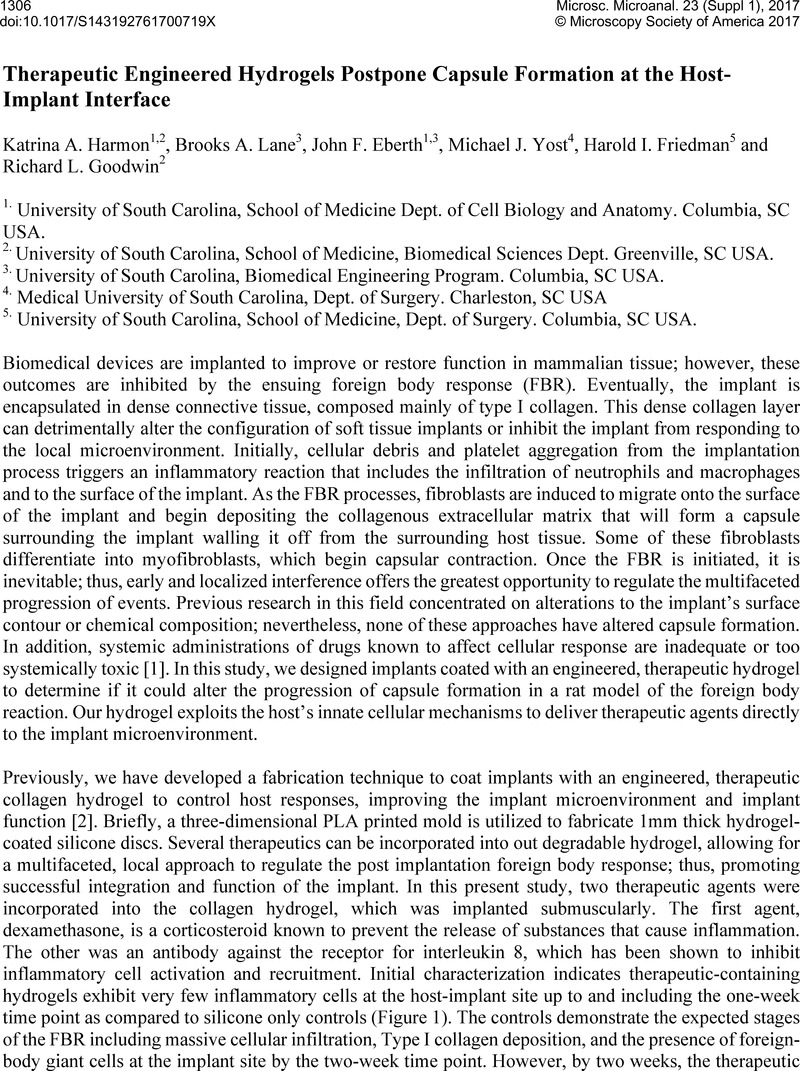No CrossRef data available.
Article contents
Therapeutic Engineered Hydrogels Postpone Capsule Formation at the Host-Implant Interface
Published online by Cambridge University Press: 04 August 2017
Abstract
An abstract is not available for this content so a preview has been provided. As you have access to this content, a full PDF is available via the ‘Save PDF’ action button.

- Type
- Abstract
- Information
- Microscopy and Microanalysis , Volume 23 , Supplement S1: Proceedings of Microscopy & Microanalysis 2017 , July 2017 , pp. 1306 - 1307
- Copyright
- © Microscopy Society of America 2017
References
[1]
Soder, BL, et al
The connexin43 carboxyl-terminal peptide ACT1 modulates the biological response to silicone implants. Plastic and Reconstructive Surgery
123(5), 1440–1451, 2009.Google Scholar
[2]
Harmon, KA, et al
The Use of a Degradable Biomaterial to Regulate Fibrosis at the Implant-Host Interface. Microscopy and Microanalysis
22(S3), 1052–1053, 2016.Google Scholar
[3] The authors acknowledge funding from the Southeastern Society of Plastic and Reconstructive Surgeons. Dr. Ashkan Afshari and Dr. Henrik Berdell are thanked for their contributions to this work.Google Scholar


